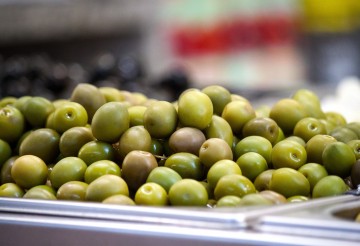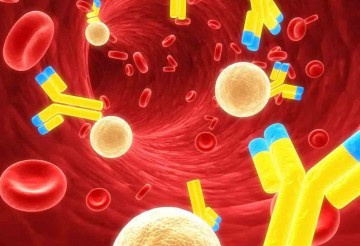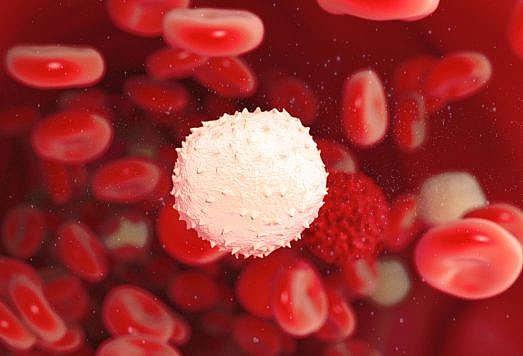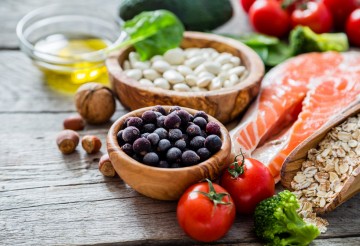Ageing
Ageing is a time-dependent progressive decline in physiological function of an organism that goes along with decreased fertility and increased susceptibility to endogenous and external threats, leading to a wide variety of related diseases like degenerative and neoplastic disorders. Currently it is well-appreciated that ageing-related alterations are multifactorial and tissue-specific at the organismal level, and involve diverse processes designated “hallmarks of ageing”. These hallmarks include genomic instability, telomere attrition, epigenetic alterations, loss of proteostasis, deregulated nutrient sensing, mitochondrial dysfunction, cellular senescence, stem cell exhaustion and altered intracellular communication.
Evidence for beneficial effects of olive oil on health
Cumulative evidence using cellular, animal and human models supports that dietary Olive Oil (OO), and particularly Virgin Olive Oil (VOO) and Extra Virgin Olive Oil (EVOO), produce a series of healthy effects in many processes related with ageing. Beneficial effects of OO consumption can be explained by its high monounsaturated fatty acids (MUFA) content and on the healthy properties of its minor bioactive compounds. Effects of OO components on cells can be direct, for instance due to their intrinsic antioxidant properties, or indirect, mostly due to their ability to modulate gene expression. Secoiridoids emerge by their capacity to modulate many pathways that are relevant for the ageing process. Since this fraction is almost lost by refining procedures, EVOO should represent the best choice for healthy ageing.
Olive oil and the effects on ageing
Genomic stability
Protection of mitochondrial and nuclear DNA against oxidative stress-induced damage can be exerted directly by the antioxidants contained in OO, with VOO polyphenols being particularly active. This beneficial action can be further increased by virtue of their ability to sustain endogenous antioxidant systems (enzymatic and non-enzymatic) resulting in the attenuation of ageing-related increase of lipid peroxidation in post-mitotic tissues, the most relevant tissues in ageing and contributing to the maintenance of genomic stability, particularly in the case of mitochondrial DNA.
Telomere attrition
Telomeres are nucleoprotein structures that protect the ends of eukaryote chromosomes. Importantly, telomere shortening is also observed during normal ageing both in human and in mice. Telomere length is considered to be a biomarker of ageing; shorter telomeres are associated with a decreased life expectancy and increased rates of developing age-related chronic diseases. Although a positive relationship of leukocyte telomere length and Mediterranean diet adherence has been also reported, studies directly evaluating the effects of OO intake on leukocyte telomere length and their effects on telomerase activity are absent, which warrants further investigation. Ethnicity may be also an important factor that must be taken into account to understand the role of Mediterranean diet (and possibly of OO) on telomere length. OO may induce epigenetic changes both by means of its MUFA content and by its phenolic compounds.
Protein homeostasis (proteostasis)
A multitude of quality control mechanisms have evolved to preserve the stability and functionality of proteomes in cells. These mechanisms function in a coordinated fashion to restore the structure of misfolded polypeptides or to remove and degrade them completely, thus preventing the accumulation of damaged components and assuring the continuous renewal of intracellular proteins. Protein homeostasis or proteostasis involves both mechanisms for the stabilization of correctly folded proteins (i.e., the heat shock family of proteins) and mechanisms for the degradation of proteins. The effect of EVOO on proteostasis is apparently age and tissue-specific. Secoiridoids enhance the expression of chaperones and are important modulators of proteostasis and nutrient sensing alterations with ageing.
Nutrient sensing
Research carried out by different groups with different models support the potential role that OO and particularly some of its phenolic compounds play a role in preventing and palliating some ageing-associated diseases as diabetes. Of note, oleuropein produced antidiabetic effects in animal and cellular models and interestingly, an olive leaf extract reproduced these effects in middle-aged overweight men, who are more prone to be insulin resistant. However, it is important to note that compounds contained in EVOO could target differentially mTOR signaling, one of the most important regulators of nutrient sensing which inhibition is associated with enhanced longevity. In this way, both oleic acid and hydroxytyrosol (HT) seem to activate mTOR signaling, whereas oleocanthal inhibits this pathway which may be a major contributor to the healthy actions of this compound. Mediterranean diet is also associated with improvements of cognitive decline in ageing which could be related with healthy effects of oleocanthal as recognized in mice and human cell lines.
Stem cell function
Secoiridoids, as oleuropein, as well as other olive phytochemicals and oleic acid also appear to exert positive actions on stem cells function and have been recognized as very important promotors of tissue regeneration both in vivo and in vitro.
Intracellular communication
Ageing also involves changes at the level of cellular communication which can be endocrine, neuroendocrine or neuronal. One of the most important intercellular communication events is inflammation. Inflammation is another major target of OO which can be explained by the anti-inflammatory action of HT, one key polyphenol in OO, and OO secoiridoids.
In summary, OO and particularly VOO and EVOO have beneficial effects on numerous hallmarks of ageing, slowing down ageing and should be included into our daily diet to counteract ageing processes.
Contact us for more in-debt nutritional and health advice: info@wellbeingphd.com.
Kind regards, dr. Vinod Sommandas, CEO/Wellbeing Tutor @Vedanta Wellbeing PhD









